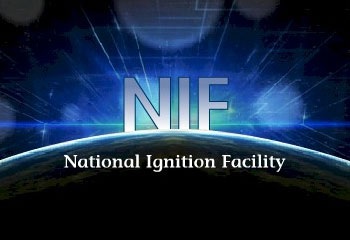Part 2 of 2 Parts (Please read Part 1 first)
The LLNL researchers applied their analysis method to forty-four implosions of cryogenic (super-cooled) deuterium-tritium ice layers that were performed at the NIF between 2016 and 2018. The movement of the hot-spot was seen in seventeen out of eighteen HDC, ten out of eleven Bigfoot and six out of fifteen CH implosions. Rinderknecht said, “It's a classic story of how two datasets are better than one.” Neutron activations diagnostics (NADs) record how many fusion-produced neutrons make it out of the implosion without experiencing scattering. This diagnostic can determine the density variations of nuclear fusion fuel in various directions.
NADs can also be influenced by the Doppler shift. (Doppler shifting occurs when a source of waves approaches or moves away from a detector. The waves are compressed as the source approaches and the waves are expanded as the source moves away from the detector.) If the implosion is moving towards the detector, the neutron get an energy boost and the signal is therefore increased because of the energy dependent NAD activation cross-section. The neutron-time-of-flight (nTOF) spectrometers also measure the neutron Doppler shift.
The diagnostics which are the only way to see what is actually happening in the implosions can be flawed or misunderstood. Rinderknecht said, “When you start collecting and interpreting data, it's easy to get into arguments about whether what you're seeing is real or not, especially if the result is surprising. Once I had both sets of data, I started plotting them together—hot-spot velocity versus density asymmetry—and the shared pattern popped right out. The two supporting datasets from two different and independently vetted diagnostics confirmed one another across so many shots with such different conditions, it became clear that something real and significant was going on.”
The next step in their research will be for the scientists to develop detailed models to assess window radiation losses more quantitatively, including the possible effects of the architecture and ablation dynamics of the window. In their paper, the researchers said, “On the basis of these data a research program has been initiated to find and control the origins of the drive asymmetry, which remains a crucial step for ongoing efforts to achieve ignition on the NIF.”
Preliminary results indicated that the asymmetries in laser delivery are comparable to those of the diagnostic windows. Capsule thickness variations, ice-layer thickness variation and laser-to-target misalignment could also be sources of asymmetry. The researchers said, “Work to identify and control the source of this asymmetry is ongoing and will be essential to further improving implosion performance and achieving ignition in indirect-drive ICF.”
Casey and Rinderknecht authored the paper tilted “Azimuthal Drive Asymmetry in Inertial Confinement Fusion Implosions on the National Ignition Facility,” on their research along with by LLNL colleagues Robert Hatarik, Richard Bionta, Brian MacGowan, Prav Patel, Nino Landen, Ed Hartouni and Omar Hurricane.
The research being carried out at the National Ignition facility on inertial confinement fusion is critical to the development of commercial fusion.
